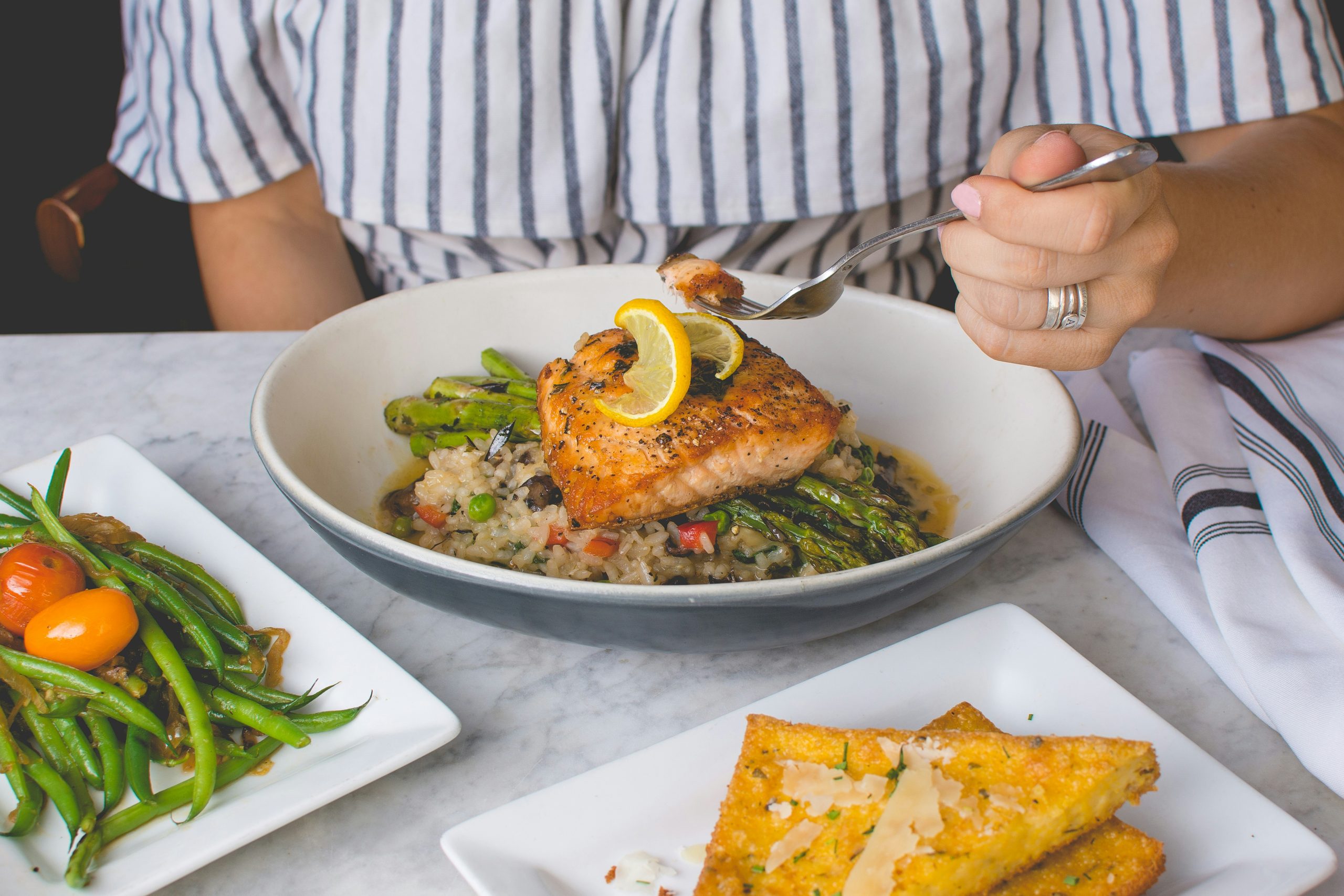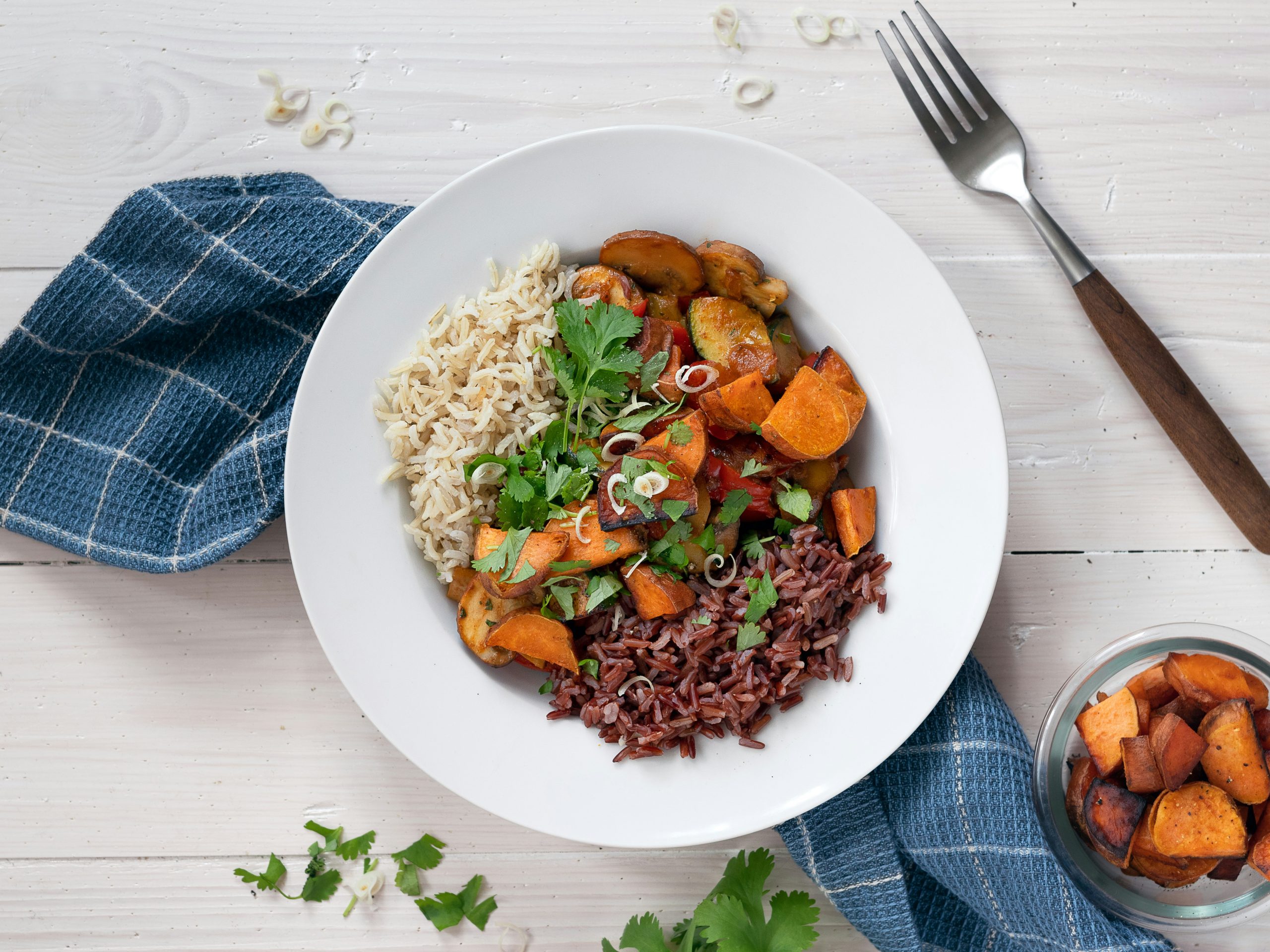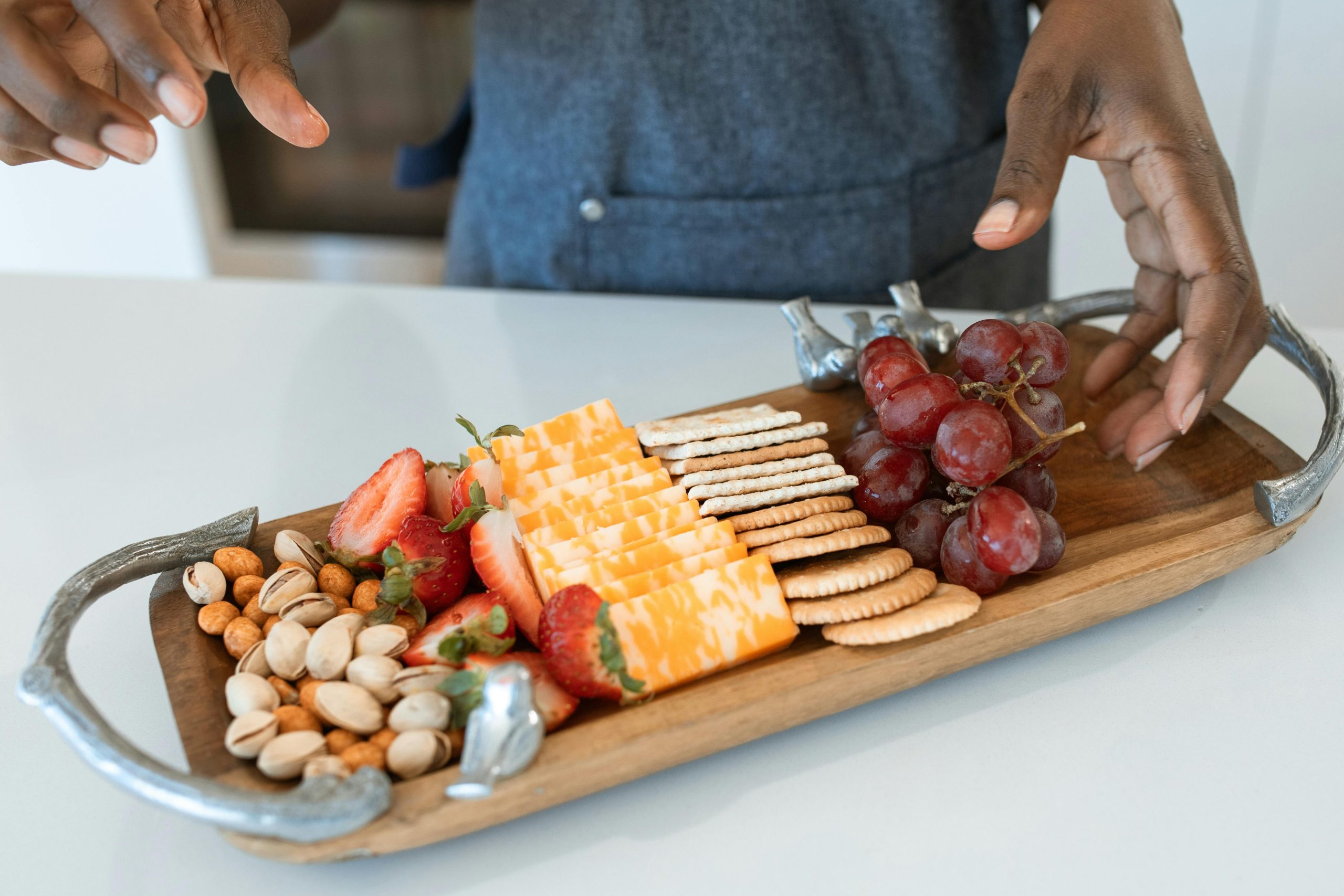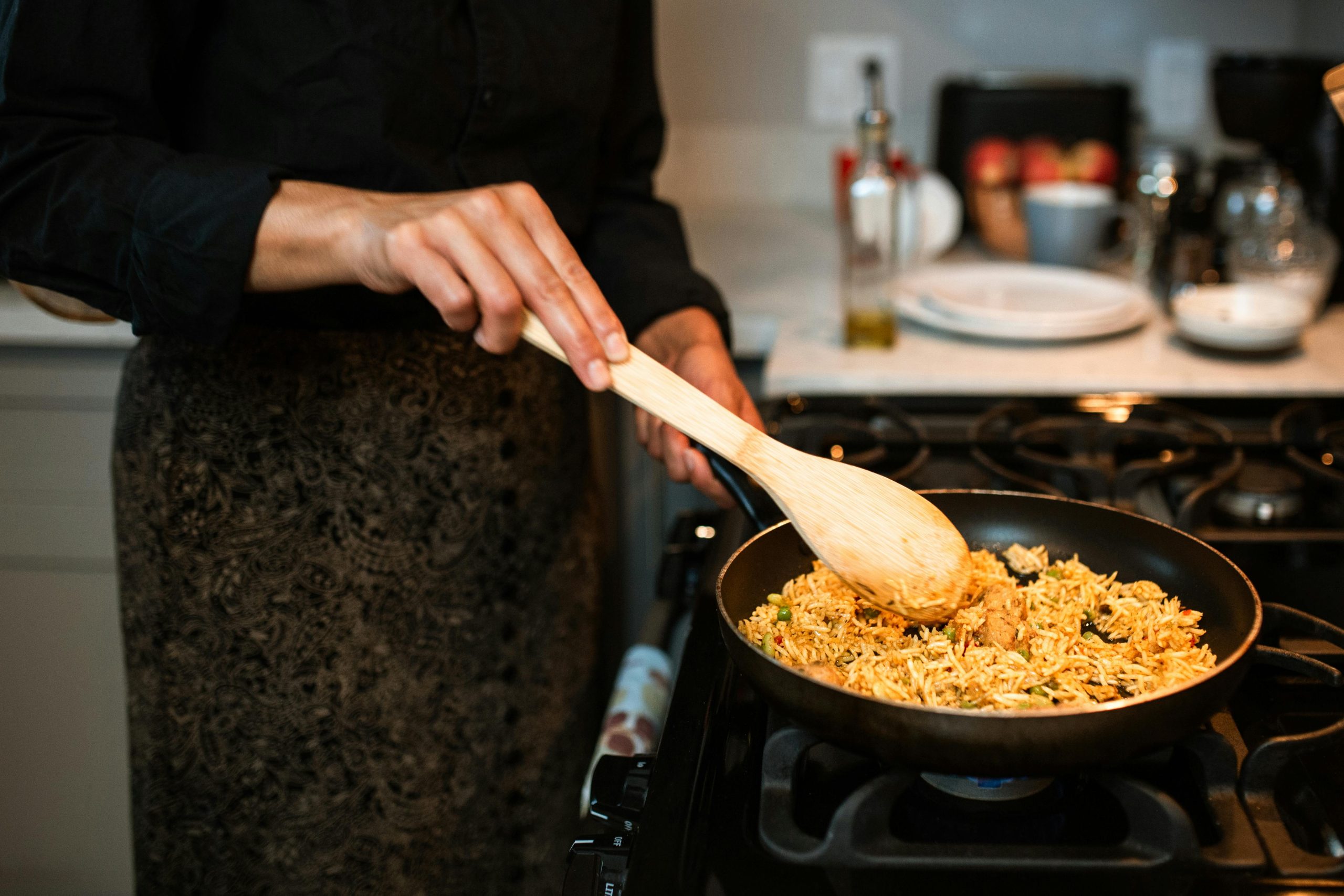Eating healthier doesn’t have to be complicated or time-consuming, it’s all about making smart, sustainable choices. With just a few simple tweaks, you can transform your meals into nutrient-packed, satisfying dishes that fuel your body without sacrificing flavor. Whether you’re looking to add more whole foods, cut back on processed ingredients, or simply bring more balance to your diet, these 15 easy steps will help you build a meal plan that works for your lifestyle.
Prioritize Whole Foods

Base your meals around whole, unprocessed foods like fresh vegetables, fruits, whole grains, and lean proteins. These ingredients provide essential nutrients without added preservatives or artificial flavors. The more natural your diet, the easier it is to maintain long-term health.
Plan Your Meals in Advance

Taking a few minutes to plan your meals for the week can help you make healthier choices and avoid last-minute, unhealthy decisions. Meal prepping also saves time and money while reducing food waste. A little preparation goes a long way in keeping your diet balanced and stress-free.
Balance Your Macros

A well-rounded meal includes a balance of proteins, healthy fats, and complex carbohydrates. This combination keeps you full longer and provides steady energy throughout the day. Experiment with different ratios to find what works best for your body.
Cut Back on Processed Foods

Highly processed foods often contain added sugars, unhealthy fats, and artificial ingredients that can negatively impact your health. Swap out packaged snacks for fresh alternatives like nuts, seeds, or homemade granola. The fewer the ingredients on a label, the better for your health.
Eat More Plant-Based Meals

Incorporating more plant-based meals into your diet can provide a wealth of vitamins, minerals, and fiber. Try dishes centered around legumes, vegetables, and whole grains for a nutrient-dense alternative to meat-heavy meals. Even one or two plant-based meals per week can make a difference.
Choose Healthy Cooking Methods

Baking, grilling, steaming, and roasting are healthier alternatives to frying, as they retain nutrients while minimizing added fats. These methods enhance the natural flavors of food without relying on excess oils or breading. The way you cook your food can be just as important as what you eat.
Related Post: 14 Retro Foods That Make Gen Z Gag
Hydrate with More Water

Drinking enough water throughout the day helps with digestion, energy levels, and overall health. Sometimes, thirst can be mistaken for hunger, leading to unnecessary snacking. Carry a reusable water bottle to stay hydrated wherever you go.
Related Post: How to Cut Brownies Cleanly
Reduce Added Sugar

Excess sugar intake has been linked to numerous health issues, from weight gain to diabetes. Read food labels carefully and opt for natural sweeteners like honey, maple syrup, or fresh fruit when possible. Gradually reducing sugar in your diet can help reset your taste buds to appreciate natural flavors.
Related Post: Top 5 Best Manual Hand Mixer Non-Electric – Buyer’s Guide & Reviews
Be Mindful of Portion Sizes

Even healthy foods can contribute to weight gain if eaten in excessive amounts. Using smaller plates, measuring portions, and listening to your body’s hunger cues can prevent overeating. Eating slowly and savoring each bite can also help you feel full with less food.
Related Post: 10 Jell-O’s Dishes So Outrageous They Belong in a Museum
Snack Smarter

Choose snacks that provide energy and nutrition, such as nuts, Greek yogurt, hummus, or fresh fruit. Avoid mindless snacking on processed foods, which can lead to excessive calorie intake without real nourishment. Keeping healthy snacks on hand makes it easier to make good choices.
Related Post: Simple Egg Substitutes You Can Use In Cake Mixes
Include More Fiber

Fiber aids digestion, supports heart health, and helps keep you full longer. Foods like whole grains, beans, vegetables, and fruits are excellent sources of fiber. Increasing your fiber intake can help regulate blood sugar levels and improve gut health.
Related Post: Best Tart Pan
Cook More at Home

Preparing meals at home gives you full control over ingredients and portion sizes. Home-cooked meals are often healthier than restaurant options, which tend to be high in salt, sugar, and unhealthy fats. Plus, cooking can be a fun and rewarding way to experiment with new flavors.
Related Post: 13 Retro Party Appetizers That Were the Life of the 70s and 80s
Eat More Omega-3s

Omega-3 fatty acids, found in salmon, flaxseeds, and walnuts, support brain function and reduce inflammation. Adding these nutrient-rich foods to your diet can help with heart health and cognitive function. Even small changes, like swapping out cooking oils, can increase your omega-3 intake.
Related Post: How To Thin Candy Melts
Experiment with Herbs and Spices

Instead of relying on salt and processed sauces for flavor, try cooking with fresh herbs and spices. Not only do they enhance the taste of your meals, but many also offer anti-inflammatory and immune-boosting benefits. Fresh basil, garlic, turmeric, and ginger are great places to start.
Related Post: Best Meatloaf Pan
Allow Yourself Some Flexibility

Eating healthy doesn’t mean perfection, treat yourself occasionally and enjoy your favorite foods in moderation. A sustainable meal plan allows for indulgences without guilt. Finding a balance between nutritious meals and occasional treats makes healthy eating enjoyable and stress-free.
Related Post: 12 Limited-Edition Pizzas That Were So Bizarre They Worked
Healthy eating isn’t about restriction, it’s about making informed choices that nourish both your body and mind. By incorporating these simple steps into your routine, you’ll find that healthy habits become second nature over time. The best part? You don’t have to give up flavor, variety, or enjoyment, just make small, meaningful changes that add up to a healthier, happier lifestyle.
Disclaimer: This list is solely the author’s opinion based on research and publicly available information.
12 Irresistible Recipes You Will Find Yourself Making on Repeat

Cooking at home is a joy, but some recipes are so good they become household staples. These dishes strike the perfect balance between flavor, ease, and comfort, making them impossible to resist. Whether it’s a cozy classic, a quick weekday favorite, or a dish that impresses every time, these are the recipes you’ll find yourself making again and again.
Read it here: 12 Irresistible Recipes You Will Find Yourself Making on Repeat
10 Jell-O’s Dishes So Outrageous They Belong in a Museum

Jell-O was the superstar of retro parties, and these 10 outrageous Jell-O’s dishes are living proof of its iconic status. From wobbly, colorful creations to bizarre combinations, these Jell-O masterpieces were bold, daring, and full of gelatinous fun. Whether it was layered with fruit, molded into wild shapes, or turned into extravagant salads, these dishes truly deserve a place in a museum of quirky food history.
Read it here: 10 Jell-O’s Dishes So Outrageous They Belong in a Museum
15 Forgotten Dinners We’re Dying to Bring Back

In a world of constantly evolving food trends, some classic dinner dishes have unfortunately fallen into obscurity. These meals might not be trending on Instagram right now, but they’ve got flavors and nostalgia that deserve a second chance. From hearty casseroles to comforting one-pot wonders, these forgotten dinners hold a special place in our hearts. Here are a couple dinners we’re dying to bring back.
Read it here: 15 Forgotten Dinners We’re Dying to Bring Back
